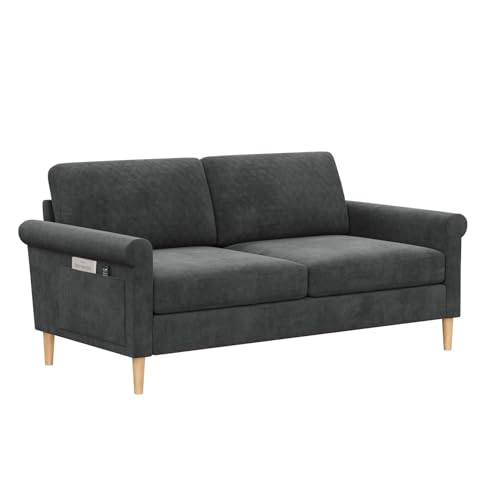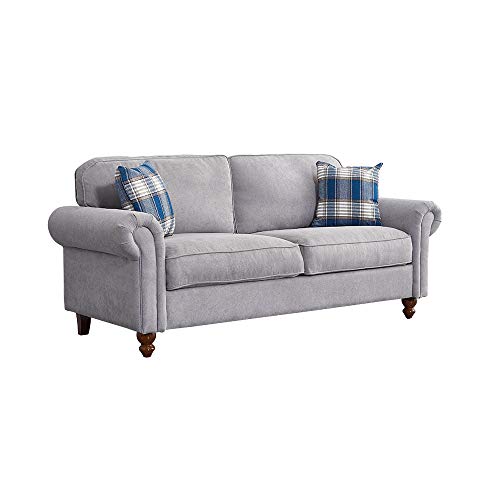Guide To 2 Seater Leather And Fabric Sofa: The Intermediate Guide To 2…
페이지 정보

본문
 Choosing Between a 2 seater leather and fabric sofa; her response,
Choosing Between a 2 seater leather and fabric sofa; her response, If you're looking for a new sofa it isn't easy to decide between fabric or leather. This is particularly true if you have little knowledge of furniture.
If you're looking for a new sofa it isn't easy to decide between fabric or leather. This is particularly true if you have little knowledge of furniture.If you have children or live in apartments, the leather and fabric 2 seater sofa option may be a good fit for you. It's easy to wipe down and it is stylish in all homes.
Comfort
A sofa is the focal feature of many people's living spaces and is a major purchase. You want one that you can sit for hours, looks great, fits with your room style and can endure the test of time. It can be difficult to decide between fabric and leather but you should consider your budget, lifestyle, and other priorities before making a decision.
Leather is a premium material that has a luxurious feel and oozes elegance in the home. It is strong and stain-resistant, it is safe for pets and children and can last for a long time if given proper care. However, it is more expensive initially and will require regular conditioning to avoid cracking or peeling.
Fabric sofas are available in a wide range of styles, colours and fabrics. They are more affordable than leather sofas. They are also soft and more welcoming with the capacity to feel "broken in" right from the beginning. They are prone to dust mites and pet hairs, and may require more frequent cleaning. There are hypoallergenic fabrics and new technology available.
Fabric sofas can last for up to 15 years if they're well maintained. Regular vacuuming and deep-cleaning will ensure that the fabric is free of odours, stains and dirt. Like leather, they are prone to sagging and flattening over time. Many fabric couches are treated with chemicals to make them stain resistant and flame retardant. These chemicals can release volatile organic compounds that can alter the quality of indoor air and trigger allergies.
Durability
We typically choose sofas with fabrics that are robust, particularly if we have pets or children. It's not necessary to invest lots of money upfront when you're likely to regret it after the first stain or claw. Also you shouldn't purchase a product that isn't expensive but doesn't stand up to daily use.
Leather is also extremely tough, with incredible tear strength. It can last up to four times longer than fabric, and it is naturally resistant to cracking, fading and flaking over time. It can also be treated to restore its natural oils and appear as good as new.
Fabrics are less expensive and come in a variety of designs, colors and textures that can be adjusted to any design scheme. They are also less difficult to clean than leather and can withstand a decent amount of wear and tear but they do tend to be more prone to moisture and fade in time.
Microfiber is a good option for durability and can be found in a wide variety of colors, however it's not as strong as genuine leather and may not withstand scratches. But, it's an excellent choice for families due to of its resistance to spills and stains and it is easy to clean, usually with just a damp cloth.
Suede is more difficult to clean and repair than leather. It is prone to lose its shape and feel rough if it is not maintained regularly. It's also a thin substance, so it may not be as sturdy as cowhide or sheepskin leather.
Allergens
Fabrics can have a significant impact on allergies. It is important to understand the way different options work. Fabrics are known to hold allergens, such as dust mites and pet dander, which can trigger symptoms like hay fever, asthma, rhinitis and eczema. These fabrics are perfect for them to thrive.
Leather is, however isn't susceptible to accumulating these allergens and provides constant comfort regardless of the season. However, it can cause dermatitis, particularly in those suffering from contact dermatitis or are sensitive to the chemicals used in tanning. Utilizing vegetable-tanned leather and ensuring regular skincare routines is essential to reduce skin reactions.
Leather and fabric sofa 2 seater sofas both have a high level of durability, however the material you choose will determine how well it holds up over time. A high-quality material will resist fade or sagging and will withstand spills, body oils and daily use. Modern fabric couches are often equipped with stain resistant treatments to make cleaning easy.
Although you may not be able completely stop an allergic reaction from the leather in your sofa, it is possible to reduce allergens by keeping a lint roller close by and regularly vacuuming your living area. This will help reduce the amount of dust, pet hair, and dust mites that are a nuisance on your sofa. If you still suffer from allergies, try replacing your sofa with a more hypoallergenic one. For instance, a sofa made of synthetic or vinyl is less likely to collect dust mites and pet dander and can help you breathe more easily.
Scratches
When buying a leather sofa, it is important to think about the amount of wear and tear you can anticipate from it. The color, finish and the quality of the leather are all important aspects in the length of time a sofa will last. You must also ensure it's sturdy enough to withstand spillages or other accidents. You can do this by searching for a sofa with a solid hardwood frame and high-density foam cushions.
Leather can be damaged by many different reasons, including stretching it, marking territory, or the reliving of tension. Scratches vary in severity and range from minor surface scratches to severe punctures and cuts. Minor scratches can be repaired by applying a conditioner for leather to the area affected. This can help restore the equilibrium of moisture and oil in the leather, which will prevent it from drying out and cracking. Deep scratches and cut might require a different treatment, depending on the amount of damage.
If you have cats, it is a good idea to trim their nails regularly to assist in stopping them from scratching your couch. You can also stop your cat's scratching habits by providing them with scratching surfaces like sisal rope or cardboard. You can also use a pet safe furniture polish that you can apply with an easy clean cloth.
It is essential to clean your leather couch frequently and keep it away from direct sunlight and heat, because they dry it out. This could cause cracks in the leather. Repairing this can be difficult and requires an overhaul. It is recommended to use a conditioner for leather to keep the leather supple.
Smell
Leather couches are known to smell different than fabric. This is due to the fact that it's porous and can absorb unwanted odors such as body odor, smoke or food easily. The good news is, odors usually dissipate with time particularly when you use a non-toxic cleaning product that is fragrance-free.
If the smell is strong It could mean that something is wrong with the foam. This is usually caused by the chemical off-gassing process of polyurethane that is derived from petroleum. If you're concerned about this, consider couches that are CertiPUR-US certified or natural latex foams.
Another method to determine faux leather is to feel for bumps or texture on the back of a sofa. This is a sign that the leather is not authentic top grain. You can also conduct a visual inspection by tilting the couch to its side to see if it's possible to see any exposed upholstery backing. If you can detect any visible backing, it's likely a synthetic material, such as polyester or polyurethane, which has a distinct scent than genuine leather.
Leather couches are more prone to picking up smells, the best way to prevent this is by regularly cleaning your sofa. This will keep it looking and fresh and will also stop it from becoming stiff or cracked over the years. Start by vacuuming and dusting the couch and then wiping it clean with a dry cloth and baking soda (a good natural way to get rid of smells). You should do this at least every two weeks or more to get rid of any dirt and dust accumulation. Apply leather conditioner to preserve the texture and color of your sofa.
- 이전글What's The Job Market For Fabric Two Seater Sofa Professionals? 24.10.28
- 다음글Cat Flap Fitting Near Me 24.10.28
댓글목록
등록된 댓글이 없습니다.
